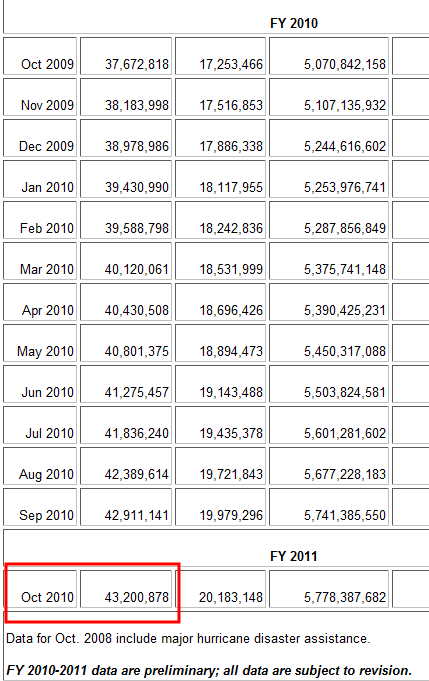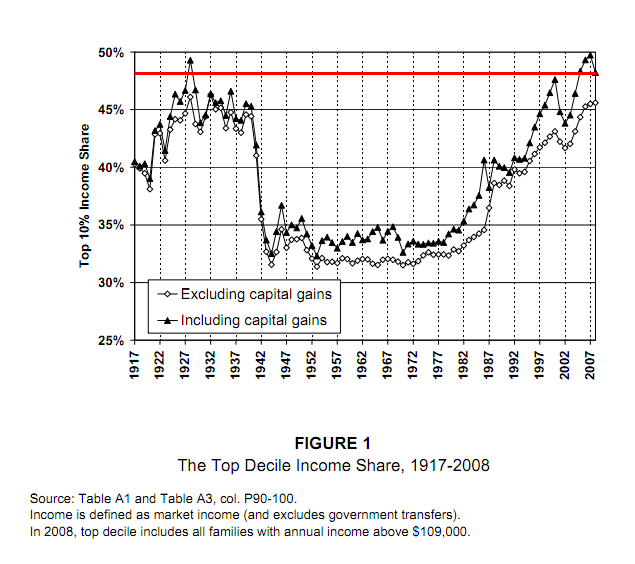Monday, January 31, 2011
Sunday, January 30, 2011
Saturday, January 29, 2011
Friday, January 28, 2011
Thursday, January 27, 2011
Wednesday, January 26, 2011
Terrorism Forecast 2011
Forecast for 2011
While it has been apparent for some time now that the al Qaeda core has been eclipsed on the physical battlefield by the franchise groups, over the past year we’ve seen indications that it is also beginning to play a secondary role in the ideological realm. Some posts on jihadist message boards criticize bin Laden and the al Qaeda core for their lack of operational activity. Some have even called them cowards for hiding in Pakistan for so long and consider their rhetoric “tired and old.” At the same time, AQAP has received a great deal of attention in the international media (and in the jihadist realm) due to operations like the assassination attempt against Prince Mohammed, the Fort Hood shootings, the Christmas Day underwear-bombing attempt and, most recently, the printer bomb plot. This publicity has given AQAP a great deal of credibility among radical Islamists. The result is that AQAP has moved to the forefront of international jihadism. This means that people have begun to listen to what AQAP says while they have begun to ignore the messages of the al Qaeda core.AQAP was well-positioned to take advantage of the bully pulpit afforded by its media-stimulating attacks. In addition to AQAP’s popular Arabic-language online magazine Sada al-Malahim, the emergence of AQAP’s English-language Inspire magazine and the increased profile and popularity of American-born Yemeni cleric Anwar al-Awlaki have also helped propel AQAP to the forefront of jihadist tactical and ideological discussions.
In a March 2010 video titled “A Call to Arms,” American-born al Qaeda spokesman Adam Gadahn openly advocated a tactical approach to terrorist attacks — conducting simple attacks utilizing readily available weapons — that was first publicly advocated by AQAP leader Nasir al-Wahayshi in Sada al-Malahim and expanded upon in each issue of Inspire. Ordinarily, it is the al Qaeda core that sets the agenda in the jihadist realm, but the success of AQAP in inspiring grassroots operatives has apparently caused the core group to jump on the AQAP bandwagon and endorse al-Wahayshi’s approach. We believe it is highly likely that we will see more examples of deference to AQAP from the al Qaeda core in the coming year. Overall, we believe that the al Qaeda core will remain marginalized on the physical battlefield in 2011 while struggling to remain relevant on the ideological battlefield.
Regional Forecasts
· U.S. and Europe: Tactically, we anticipate that the core and franchise groups will continue to have difficulty attacking the United States and Europe directly and will continue to reach out to grassroots operatives who have the ability to travel to the West. This means we will likely see more plots involving poorly trained operatives like Zazi and Shahzad. While such individuals do have the capacity to kill people, they lack the capacity to conduct spectacular terrorist attacks like 9/11. This trend also means that travel to places such as Pakistan, Yemen or Somalia, or contact with jihadist planners there, will continue to be an operational weakness that can be exploited by Western intelligence agencies.
While al-Wahayshi’s appeal for aspiring jihadist militants to avoid contacting franchise groups and travel overseas in search of jihadist training makes a great deal of sense tactically, it has proved very difficult to achieve. This is evidenced by the fact that we have seen very few plots or attacks in which the planners were true lone wolves who had absolutely no contact with outside jihadists — or with government agents they believed to be jihadists. So while the leaderless resistance model can be quite difficult for law enforcement to guard against, its downside for the jihadists is that it takes a unique type of individual to be a true and effective lone wolf.
Since we believe most plots in the United States and Europe will again involve grassroots jihadists in 2011, we also believe that soft targets such as public gatherings and mass transportation will continue to be the most popular target set. We can also anticipate that franchises will continue to seek ways to attack aircraft. Certainly, AQAP has a history of such attacks, and perhaps even groups like al Shabaab or TTP could attempt to hit this long-popular jihadist target set. In places like Pakistan, Yemen, Afghanistan and Somalia, we believe that hotels and housing compounds could serve as attractive and softer alternative targets to more difficult targets such as U.S. embassies or consulates. As we have recently noted, we also see no end to the targeting of people and institutions involved in the Mohammed cartoon controversy.
We also believe it is likely in the coming year that more grassroots militants in the United States will heed al-Wahayahi’s advice and begin to conduct simple attacks using firearms rather than attempting more difficult and elaborate attacks using explosives.
· Pakistan: The number of jihadist bombing attacks in Pakistan is trending down, as is the size of the devices involved. This means that the Pakistani government seems to have reduced the capabilities of the TTP to conduct attacks. It may be no coincidence that such attacks have trended down at the same time that U.S. unmanned aerial vehicle strikes along the border have been picking up. That said, the Pakistani tribal areas are teeming with weapons and ordnance and there is a wide array of jihadist elements that could employ them in an attack, from the TTP to al Qaeda to al Qaeda-linked foreign fighters. This means that Pakistan will face the threat of attack for the foreseeable future. The area along the border with Afghanistan is rugged and has proved hard to pacify for hundreds of years. We do not think the Pakistanis will be able to bring the area under control this year.
· Afghanistan: In the coming year, as the spring thaw sets in, we will be watching closely for a Taliban resurgence and a more concerted attempt to reverse gains made by the International Security Assistance force in 2010. Our 2011 forecast for this conflict can be found here.
· Yemen: We will continue to monitor Yemen closely. As mentioned above, so far the large influx of U.S. intelligence and military assets has not seemed to have helped the Yemeni government to seriously weaken AQAP, which is the strongest of the jihadist franchises outside of Afghanistan and Pakistan, region and the one with the longest transnational reach. Interestingly, the group has not had a very good track record of hitting international targets inside Yemen, aside from occasional attacks against unarmed tourists. This might cause AQAP to divert from harder targets like embassies and motorcades of armored vehicles toward softer targets like individual foreigners and foreign housing compounds. In December, a Jordanian jihadist conducted a poorly executed attack against U.S. Embassy personnel who had stopped at a pizzeria. This could have been a one-off attack, but it could also have been the start of a change in AQAP targeting in Yemen.
· Indonesia: The Indonesian government has continued to hit Tanzim Qaedat al-Jihad very hard, and it is unlikely that the group will be able to regroup and conduct large-scale terrorist attacks in 2011.
· North Africa: In the north of Algeria, AQIM has continued to shy away from the al Qaeda core’s targeting philosophy and concentrated on attacking government and security targets — essentially functioning as the Salafist Group for Preaching and Combat with a different name. The Algerian government has hit AQIM very hard in its traditional mountain strongholds east of Algiers, and the ideological rift over whether to follow al Qaeda’s dictates has also hurt the group. An increase in the abduction of Westerners and clashes with security forces in the Sahara-Sahel is not a convincing indication of AQIM’s expanding reach. Nor are incompetent attacks like the Jan. 5 attack against the French Embassy in Bamako, Mali. Much of this expanded activity in the south is the result of rivalries between sub-commanders and efforts to raise money via kidnapping and banditry in order to survive. This is a sign of weakness and lack of cohesion, not strength.
AQIM is a shell of what it was four years ago. It will continue to kidnap victims in the Sahel — or acquire kidnapped foreigners from ethnic Tuareg rebels in Mali and Niger — and the occasional small attack, but it is not at this time a unified militant organization that poses a regional, much less transnational, threat.
· Somalia: Al Shabaab went transnational with the Kampala attacks and has also been able to consolidate its grip over the jihadist landscape in Somalia this year by absorbing main rival Hizbul Islam. However, al Shabaab itself is not a monolithic entity. It is comprised of different factions, with the main subsets being led by al Shabaab chief Ahmad Abdi Godane (aka Abu Zubayr) and one of his top commanders, Muktar Robow (aka Abu Mansur). Abu Zubayr leads the more transnational or jihadist element of the organization, while Abu Mansur and his faction are more nationalist in their philosophy and military operations. This factionalism within al Shabaab and the general unpopularity of jihadism among large portions the Somali population should help prevent al Shabaab from conquering Somalia (as will an increase in the number of African Union peacekeeping troops and the operations of other anti-al Shabaab forces like the Ethiopian-backed militia Ahlu Sunnah Waljamaah).
However, Abu Zubayr maintains close contact with people in the Somali diaspora in East Africa, South Africa, Australia, Europe and the United States. These contacts provide funding and fighters that will help sustain the insurgency in Somalia, but they could also be used to conduct transnational attacks outside of Somalia.
· India: India continues to face a very real threat from transnational jihadist groups such as the LeT and HUJI, which will continue to plan attacks in India and against Indian interests in places like Afghanistan. India also faces a persistent, though lesser, threat from domestic jihadist groups like Indian Mujahideen (IM).
· Egypt: The Jan. 1, 2011, bombing at a church in Alexandria raised the possibility that transnational jihadists were once again becoming more involved in Egypt — especially in light of threats by the Islamic State in Iraq to attack Egyptian Christians in Iraq in early November 2010. However, it now appears that initial reports that the Alexandria attack was a suicide operation may have been incorrect, and Egyptian authorities are reporting that the device was similar in construction to devices used in two 2009 attacks, indicating that the bombmaker in the Alexandria attack was not likely a recent import from Iraq. The Egyptian militant group Gamaah al-Islamiyahpublicly joined forces with al Qaeda in August 2006, but little has come from the union. It will be important to watch and see if the Alexandria attack was an anomaly or the beginning of a new pattern of attacks in Egypt.
· Caucasus: The rise of the Caucasus Emirate in 2009-2010 brought with it an increase in operational tempo and resulted in the March 29, 2010, suicide attacks against the Moscow Metro. The group also attempted to provide a unified umbrella for a number of disparate militant groups operating in the region — an umbrella that had more of a jihadist than the traditional nationalistic bent seen in militant groups operating in the region. However, a power struggle within the group, combined with a Russian counteroffensive, has resulted in the group being unable to provide the unified leadership it envisioned. There are still militant groups active in the Caucasus, and while they can kill people, they do not possess the cohesion or capability to pose a true strategic threat to Russia. It appears that in the coming year the Russian authorities will launch an operation in Dagestan that will utilize the tactics they have used in Chechnya. Such an operation could produce a significant backlash.
· Iraq: The year 2010 was highly successful for U.S. and Iraqi troops in the fight against the Iraqi jihadist franchise, the Islamic State of Iraq (ISI). Combined U.S.-Iraqi efforts, with local assistance, have severely damaged the group’s finances, leadership and ability to recruit. It is unlikely that the ISI’s propensity for violent attacks will wane, but the group’s diminished leadership, operational capacity and logistics infrastructure make its future seem bleak. At the beginning of 2010, the trend was for ISI to conduct an attack every six to 10 weeks against government ministries, but by the end of the year major attacks were occurring less frequently and against softer, less strategic targets, like churches.
While the al Qaeda core has been marginalized, the ideology of jihadism continues to survive and win new converts. As long as this ideology is able to spread, the war its adherents are waging to subjugate the rest of the world will continue. While jihadists do not pose a strategic geopolitical threat on a global Tuesday, January 25, 2011
Monday, January 24, 2011
Saturday, January 22, 2011
Friday, January 21, 2011
Get REady For The Bankruptcy Of Several American States
Path Is Sought for States to Escape Debt Burdens
By MARY WILLIAMS WALSH
Published: January 20, 2011
Policy makers are working behind the scenes to come up with a way to let states declare bankruptcy and get out from under crushing debts, including the pensions they have promised to retired public workers.
Stephen Crowley/The New York Times
Senator John Cornyn asked this month whether Congress should consider establishing a bankruptcy procedure for states. More Photos »
Multimedia
Readers' Comments
Share your thoughts.
Unlike cities, the states are barred from seeking protection in federal bankruptcy court. Any effort to change that status would have to clear high constitutional hurdles because the states are considered sovereign.
But proponents say some states are so burdened that the only feasible way out may be bankruptcy, giving Illinois, for example, the opportunity to do what General Motorsdid with the federal government’s aid.
Beyond their short-term budget gaps, some states have deep structural problems, like insolvent pension funds, that are diverting money from essential public services like education and health care. Some members of Congress fear that it is just a matter of time before a state seeks a bailout, say bankruptcy lawyers who have been consulted by Congressional aides.
Bankruptcy could permit a state to alter its contractual promises to retirees, which are often protected by state constitutions, and it could provide an alternative to a no-strings bailout. Along with retirees, however, investors in a state’s bonds could suffer, possibly ending up at the back of the line as unsecured creditors.
“All of a sudden, there’s a whole new risk factor,” said Paul S. Maco, a partner at the firm Vinson & Elkins who was head of the Securities and Exchange Commission’s Office of Municipal Securities during the Clinton administration.
For now, the fear of destabilizing the municipal bondmarket with the words “state bankruptcy” has proponents in Congress going about their work on tiptoe. No draft bill is in circulation yet, and no member of Congress has come forward as a sponsor, although Senator John Cornyn, a Texas Republican, asked the Federal Reserve chairman,Ben S. Bernanke, about the possiblity in a hearing this month.
House Republicans, and Senators from both parties, have taken an interest in the issue, with nudging from bankruptcy lawyers and a former House speaker, Newt Gingrich, who could be a Republican presidential candidate. It would be difficult to get a bill through Congress, not only because of the constitutional questions and the complexities of bankruptcy law, but also because of fears that even talk of such a law could make the states’ problems worse.
Lawmakers might decide to stop short of a full-blown bankruptcy proposal and establish instead some sort of oversight panel for distressed states, akin to the Municipal Assistance Corporation, which helped New York City during its fiscal crisis of 1975.
Still, discussions about something as far-reaching as bankruptcy could give governors and others more leverage in bargaining with unionized public workers.
“They are readying a massive assault on us,” said Charles M. Loveless, legislative director of the American Federation of State, County and Municipal Employees. “We’re taking this very seriously.”
Mr. Loveless said he was meeting with potential allies on Capitol Hill, making the point that certain states might indeed have financial problems, but public employees and their benefits were not the cause. The Center on Budget and Policy Priorities released a reporton Thursday warning against a tendency to confuse the states’ immediate budget gaps with their long-term structural deficits.
“States have adequate tools and means to meet their obligations,” the report stated.
No state is known to want to declare bankruptcy, and some question the wisdom of offering them the ability to do so now, given the jitters in the normally staid municipal bond market.
Slightly more than $25 billion has flowed out of mutual funds that invest in muni bonds in the last two months, according to the Investment Company Institute. Many analysts say they consider a bond default by any state extremely unlikely, but they also say that when politicians take an interest in the bond market, surprises are apt to follow.
Mr. Maco said the mere introduction of a state bankruptcy bill could lead to “some kind of market penalty,” even if it never passed. That “penalty” might be higher borrowing costs for a state and downward pressure on the value of its bonds. Individual bondholders would not realize any losses unless they sold.
But institutional investors in municipal bonds, like insurance companies, are required to keep certain levels of capital. And they might retreat from additional investments. A deeply troubled state could eventually be priced out of the capital markets.
“The precipitating event at G.M. was they were out of cash and had no ability to raise the capital they needed,” said Harry J. Wilson, the lone Republican on President Obama’s special auto task force, which led G.M. and Chrysler through an unusual restructuring in bankruptcy, financed by the federal government.
Mr. Wilson, who ran an unsuccessful campaign for New York State comptroller last year, has said he believes that New York and some other states need some type of a financial restructuring.
He noted that G.M. was salvaged only through an administration-led effort that Congress initially resisted, with legislators voting against financial assistance to G.M. in late 2008.
“Now Congress is much more conservative,” he said. “A state shows up and wants cash, Congress says no, and it will probably be at the last minute and it’s a real problem. That’s what I’m concerned about.”
Discussion of a new bankruptcy option for the states appears to have taken off in November, after Mr. Gingrich gave a speech about the country’s big challenges, including government debt and an uncompetitive labor market.
“We just have to be honest and clear about this, and I also hope the House Republicans are going to move a bill in the first month or so of their tenure to create a venue for state bankruptcy,” he said.
A few weeks later, David A. Skeel, a law professor at the University of Pennsylvania, published an article, “Give States a Way to Go Bankrupt,” in The Weekly Standard. It said thorny constitutional questions were “easily addressed” by making sure states could not be forced into bankruptcy or that federal judges could usurp states’ lawmaking powers.
“I have never had anything I’ve written get as much attention as that piece,” said Mr. Skeel, who said he had since been contacted by Republicans and Democrats whom he declined to name.
Mr. Skeel said it was possible to envision how bankruptcy for states might work by looking at the existing law for local governments. Called Chapter 9, it gives distressed municipalities a period of debt-collection relief, which they can use to restructure their obligations with the help of a bankruptcy judge.
Unfunded pensions become unsecured debts in municipal bankruptcy and may be reduced. And the law makes it easier for a bankrupt city to tear up its labor contracts than for a bankrupt company, said James E. Spiotto, head of the bankruptcy practice at Chapman & Cutler in Chicago.
The biggest surprise may await the holders of a state’s general obligation bonds. Though widely considered the strongest credit of any government, they can be treated as unsecured credits, subject to reduction, under Chapter 9.
Mr. Spiotto said he thought bankruptcy court was not a good avenue for troubled states, and he has designed an alternative called the Public Pension Funding Authority. It would have mandatory jurisdiction over states that failed to provide sufficient funding to their workers’ pensions or that were diverting money from essential public services.
“I’ve talked to some people from Congress, and I’m going to talk to some more,” he said. “This effort to talk about Chapter 9, I’m worried about it. I don’t want the states to have to pay higher borrowing costs because of a panic that they might go bankrupt. I don’t think it’s the right thing at all. But it’s the beginning of a dialog.”
How the financial elite have dismantled the American middle class – top 1 percent share of wealth at levels not seen since the Great Depression. Goldman Sachs offering average bonuses of $430,000 while a record 43,200,000 Americans receive food stamps.
How the financial elite have dismantled the American middle class – top 1 percent share of wealth at levels not seen since the Great Depression. Goldman Sachs offering average bonuses of $430,000 while a record 43,200,000 Americans receive food stamps.
How the financial elite have dismantled the American middle class – top 1 percent share of wealth at levels not seen since the Great Depression. Goldman Sachs offering average bonuses of $430,000 while a record 43,200,000 Americans receive food stamps.
- Posted by mybudget360 in 401k, Employment, bailout, banks, debt, economy, i-banking, income,middle class, wall street
- 0 Comments
The U.S. economy is now operating like a finely tuned engine bent on dismantling the middle class and protecting the tiny elites in our nation that have learned to manipulate both political parties to their financial benefit. This did not occur over night but started in the 1970s when the U.S. government and investment banks juiced up the nation with deficit and debt spending. A single family cannot go into debt for a very long time without consequences but a rising housing market hid much of the inequality developing in our system for a very long time. It was an illusion of stability. The top 1 percent in our nation now control 43 percent of all financial wealth. These are levels not seen since the years before the Great Depression consumed the global economy. The fact of the matter is the top 1 percent has massively gained in real financial terms because of political maneuvering and selling out the middle class. Since these people protect their wealth through investment banks and tax breaks politicians have not dared touch these sacred cows or even asking banks to pay for their decades of personal irresponsible lending. In the end the elite have created a system where the working and middle class are paying for their own demise.
“(UK Guardian) A homeless encampment known as Tent City, in Sacramento, California, in 2009. Since the 1970s, real wages stopped growing and the gap between rich and poor expanded as the US economy slowed down after decades of growth. Photograph: Rich Pedroncelli/AP”
I find it disturbing that foreign news organizations are covering our financial reality better than local media outlets. This probably has to do with many large media outlets being controlled by the same Wall Street power brokers. This is no conspiracy story but a logical extension of money infiltrating and controlling politics, laws, and the trajectory of our economy moving forward. The above comes from the UK and shows a grim reality that many Americans do not want to face. Those that do face it are usually left voiceless (ironically the viral star Ted Williams was a homeless man with a golden voice). We have a very large problem with many people falling off of the economic radar. Tent cities are now a staple in many areas of the country and food banks are facing unprecedented demand for their services. Why is this occurring in the midst of a recovery? Well take a look at how many people now receive food assistance from the government:
Source: SNAP
The latest uninviting data shows 43,200,000 Americans receiving some form assistance, an all-time record that seems to be broken each month. This number has been moving up steadily for the entire decade. Many of these people are families that have been thrown off of the middle class track. With 1 out of 3 families with no retirement savings many people are one paycheck away from being homeless or being evicted, a fact confirmed by the record number of foreclosures in 2010. What is disturbing however is how many people are anesthetized by the mainstream media and somehow blame each other for these problems. Have they not noticed the record profits at investment banks? Did they miss the memo that Goldman Sachs, a bank that would not even be around without taxpayer support, is now going to give out bonuses that average $430,000? Did people forget that it took Wall Street years to create these financially destructive products to gamble away the wealth of average Americans and distribute it amongst themselves? While most working and middle class Americans operate in the rugged individualistic capitalism world of Social Darwinism many of the elite operate in a plutocracy model where they win no matter what outcome hits in the market. If they make a failed bet they can extort politicians and force their hands for bailouts.
“US employers took advantage of the changed situation: they stopped raising wages. When basic labour scarcity became labour excess, not only real wages, but eventually benefits, too, would stop rising. Over the last 30 years, the vast majority of US workers have, in fact, gotten poorer, when you sum up flat real wages, reduced benefits (pensions, medical insurance, etc), reduced public services and raised tax burdens. In economic terms, American “exceptionalism” began to die in the 1970s.”
The disparity is obvious by examining the above chart. Income is now flowing to the top 10 percent in a way that it has not since the 1920s all the while middle class American have been increasing productivity and have actually added more family members to the workforce merely to stay afloat. Half of all American workers make $25,000 a year or less. Wages have been stuck for over a decade and have gone virtually nowhere for a few decades in real terms. Yet these gains in productivity and favorable political climate have flowed one way:
“The rich, however, have got much richer since the 1970s, as every measure of US income and wealth inequality attests. The explanation is simple: while workers’ average real wages stayed flat, their productivity rose (the goods and services that an average hour’s labour provided to employers). More and better machines (including computers), better education, and harder and faster labour effort raised productivity since the 1970s. While workers delivered more and more value to employers, those employers paid workers no more. The employers reaped all the benefits of rising productivity: rising profits, rising salaries and bonuses to managers, rising dividends to shareholders, and rising payments to the professionals who serve employers (lawyers, architects, consultants, etc).”
So even with the top 10 percent we see the inequality spike as we move up the chain. The narrative coming out of Wall Street is all of this was inevitable. That somehow the middle class disappearing is just the market working itself out. That is a blatant lie. If that were to be the case all big investment banks on Wall Street would be in the ash heap of history. That would be the market working things out. Instead, we have subsidized cronyism for thetop 1 percent all at the expense of the working and middle class:
“Since the 1970s, most US workers postponed facing up to what capitalism had come to mean for them. They sent more family members to do more hours of paid labour, and they borrowed huge amounts. By exhausting themselves, stressing family life to the breaking point in many households, and by taking on unsustainable levels of debt, the US working class delayed the end of American exceptionalism – until the global crisis hit in 2007. By then, their buying power could no longer grow: rising unemployment kept wages flat, no more hours of work, nor more borrowing, were possible. Reckoning time had arrived. A US capitalism built on expanding mass consumption lost its foundation.”
Average Americans need to wake up and get a handle on the situation. College tuition now is even outpacing inflation compared to other sectors so it is likely that fewer Americans will gain the knowledge base needed to combat these entrenched interests without going into massive debt at these institutions. Many would rather be fixated on a homeless man with a golden voice instead of looking at where all the real gold is in our economy.
Thursday, January 20, 2011
Major Criminal Activity In US Mortgages
"Indeed, it appears as though many loans and other mortgage-related assets have been double and even triple-pledged to various constituencies"
With all the MERS rhetoric going around today, and all of the other misinformation coming out of the Mortgage Bankers Assosiation Summit from yesterday, I felt this would be a good Blast from the Past Repost of something we covered back in June of last year...
Reposted in Full Below...
Freddie Mac / Bank of America / Taylor Bean Whitaker – IMPORTANT INFO & STATEMENT REGARDING ASSIGNMENTS… TRANSFERS… NOTE OWNERSHIP!!!
In my 1999 21st Century Loan Sharks Report, I coined and defined the term "Predatory Mortgage Securitization" (see http://en.wikipedia.org/wiki/Predatory_mortgage_securitization) in my report from MY PERSONAL RESEARCH AND ANALYSIS I DEFINED SOME THE FOLLOWING PRACTICES THAT DEFINED Predatory Mortgage Securitization....
- Securitizations that are termed and classified as “whole loan” and “true” sales “without recourse” that are really financing mechanisms with undocumented side deals and agreements for recourse which may not be able to be classified as investments in real estate and may have tax and reporting consequences for purchasers;
- Stamping, filing and recording loan and mortgage instruments that indicate loan was sold “without recourse” when in fact there were recourse provisions;
- Failing to record in country records the true and real ownership, assignment and endorsements of promissory notes, deeds and other mortgage documents which were part of sale, assignment or transfer;
- Knowingly accepting via computer tapes the principal balances of loans offered for securitization when the servicers, investment bank or securitizer has knowledge that problems or potential fraud existed in the servicing operation of the bank, servicer, broker originating, selling, assigning or transferring the loan;
- Knowingly accepting via computer tapes the principal balances of loans offered for securitization when the servicers, investment bank or securitizer has knowledge that problems or potential fraud existed in the servicing operation of the bank, servicer, broker originating, selling, assigning or transferring the loan and the new owners, servicer and assignee securitizing the loan pool does not possess the full and complete loan transaction histories for each borrower;
- Knowingly accepting loans and not disclosing to investors problems with loan documentation; missing, altered or fraudulent documentation in loan file; chain of titles and ownership; threatened legal actions; current regulatory actions or complaints made about loans assigned;
- Reporting problems or improper custody, maintenance and control of promissory notes, deeds and other loan documents;
- Offering for sale and securitization interests in notes, deeds or other mortgage instruments that the servicer or securitizer does not have a real interest in;
- Offering for sale and securitization interests in notes, deeds or other mortgage instruments that the servicer or securitizer does not have in their custody or control;
- Offering for sale and securitization interests in notes, deeds or other mortgage instruments that the servicer or securitizer has offered for sale to someone else;
- Offering for sale and securitization interests in notes, deeds or other mortgage instruments that the servicer or securitizer is owned by someone other than party identified in the prospectus;
In essence on thousands of occasions I stated to regulators, CEOS, banks, Fannie and Freddie that the practices of the banks were that they were double and multi-pledging assets and pledging paid off and refinance notes to securitizations. This is something April, Max and I have discussed for years now. Now, they come and admit that each of my allegations were true Without analyzing the deal, as complex as they are, you WILL NEVER KNOW IF THE FORECLOSING PARTY HAS "ANY" RIGHT TO FORECLOSE!!!
The motives I identified for the "Blank Endorsements" and missing assignments and "pre-notarized" "Blank Assignments" and "Blank Allonges" that "were placed into the "custodial/collateral" files were to be able to:
Multi-pledge collateral (Notes) so as to cook the books;
In case of bankruptcy, allow the entity in possession of the notes to simply transfer to another entity to be decided or themselves the notes etc... so as to keep out of the bankruptcy estate of the bankrupt creditor;
To pretend to show that a "true sale" occurred when in reality the so-called lenders were financing their receivables;
Complete and change chains in titles to notes that were toxic where fraud was known and HDC could be achieved;
Shuffle the ball (note) under the shell (owner) so as to subvert TILA, RESPA, and FDCPA claims and other lawsuit claims and any related HDC and assignee liability issues.
Now, in BOA's Motion in the TBW case, they prove my allegations that the notes were multi-pledged and my statement for years that unless you see where each note comes on and off the books, and review the custodial documents, you will NEVER KNOW WHO OWNS THE NOTE and has any right to accelerate, amend, modify, settle, payoff, satisfy, return, and cancel the note, let alone authority or standing to foreclose.
Here is the key part from the motion....
On numerous occasions, the Debtor has informed the Court and other parties in interest that one of the biggest challenges in this case will be sorting out the competing claims to cash and other assets that flowed through the Debtor’s accounts prior to the bankruptcy filing. Indeed, it appears as though many loans and othermortgage-related assets have been double and even triple-pledged to various constituencies. According to the Debtor, the largest single source of disputed funds—more than $548 million according to the Debtor’s Second Interim Reconciliation Report—relates to Freddie Mac. Indeed, BofA believes that there were improper diversions of Ocala loans and assets from TBW to Freddie Mac, and Ocala may have valid ownership claims with respect to a substantial portion of assets that relate to Freddie Mac. Accordingly, there can be little doubt that BofA, in its representative capacities with respect to Ocala, has a valid and pressing need for information regarding Freddie Mac’s extensive relationship with the Debtor, which is directly relevant and necessary to evaluate the Debtor’s property, liabilities, and financial condition. In just a few weeks, the Debtor intends to file an Asset Reconciliation Report that will identify with greater specificity (but, importantly, not resolve) the remaining issues with respect to ownership rights. As a result, the need for BofA to gain access to documents in Freddie Mac’s possession has become particularly urgent. Among other things, BofA needs to obtain documents from and examine witnesses at Freddie Mac to (1) evaluate competing claims against the estate, (2) test the assumptions contained in the Asset Reconciliation Report, and (3) examine Freddie Mac’s claim of ownership with respect to certain mortgage assets and its custodial arrangements with Colonial Bank for those assets. Despite these time sensitivities, Freddie Mac has so far blocked BofA’s ability to obtain any of this information, including those documents that have already been produced to the Debtor and counsel for the Committee. In its objection, Freddie Mac goes to great lengths to characterize the BofA 2004 Motion as overly burdensome, massively expensive, improperly motivated, and generally disruptive to the ongoing discovery between the Debtor and Freddie Mac. Even if such arguments had any merit under the circumstances (which they do not), the simple fact remains: nearly three months after the Court entered its order on the Debtor’s Rule 2004 motion authorizing and directing examination of Freddie Mac, BofA has not been able to review a single document...
Nye Lavalle
Be sure to sift through the files below... Fascinating...
~
Subscribe to:
Posts (Atom)




















 If you enjoyed this post click here to subscribe to a complete feed and stay up to date with today’s challenging market!
If you enjoyed this post click here to subscribe to a complete feed and stay up to date with today’s challenging market!


